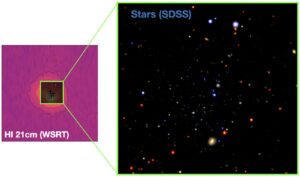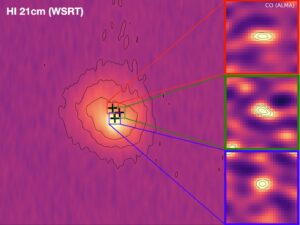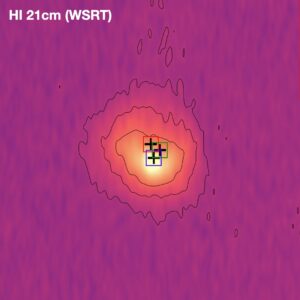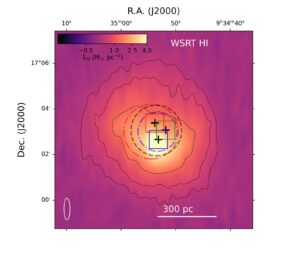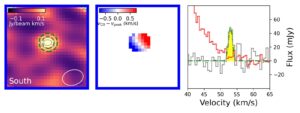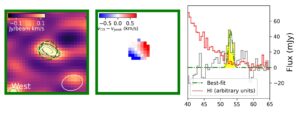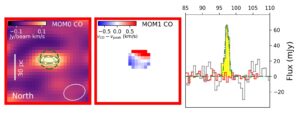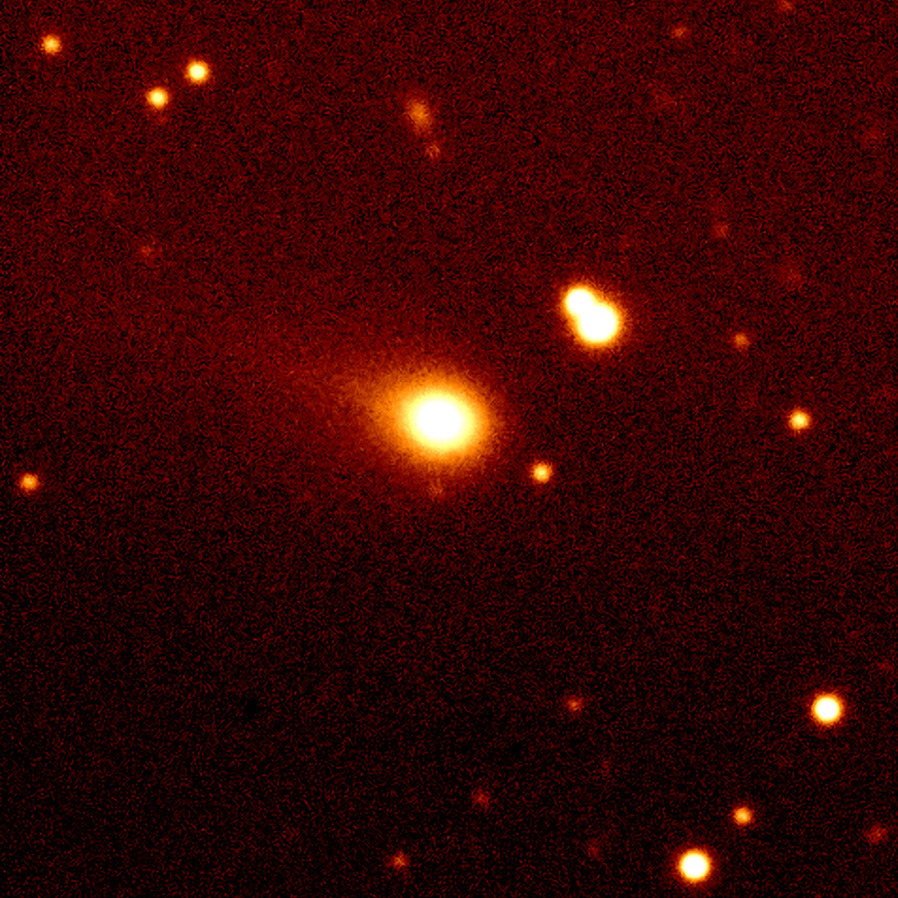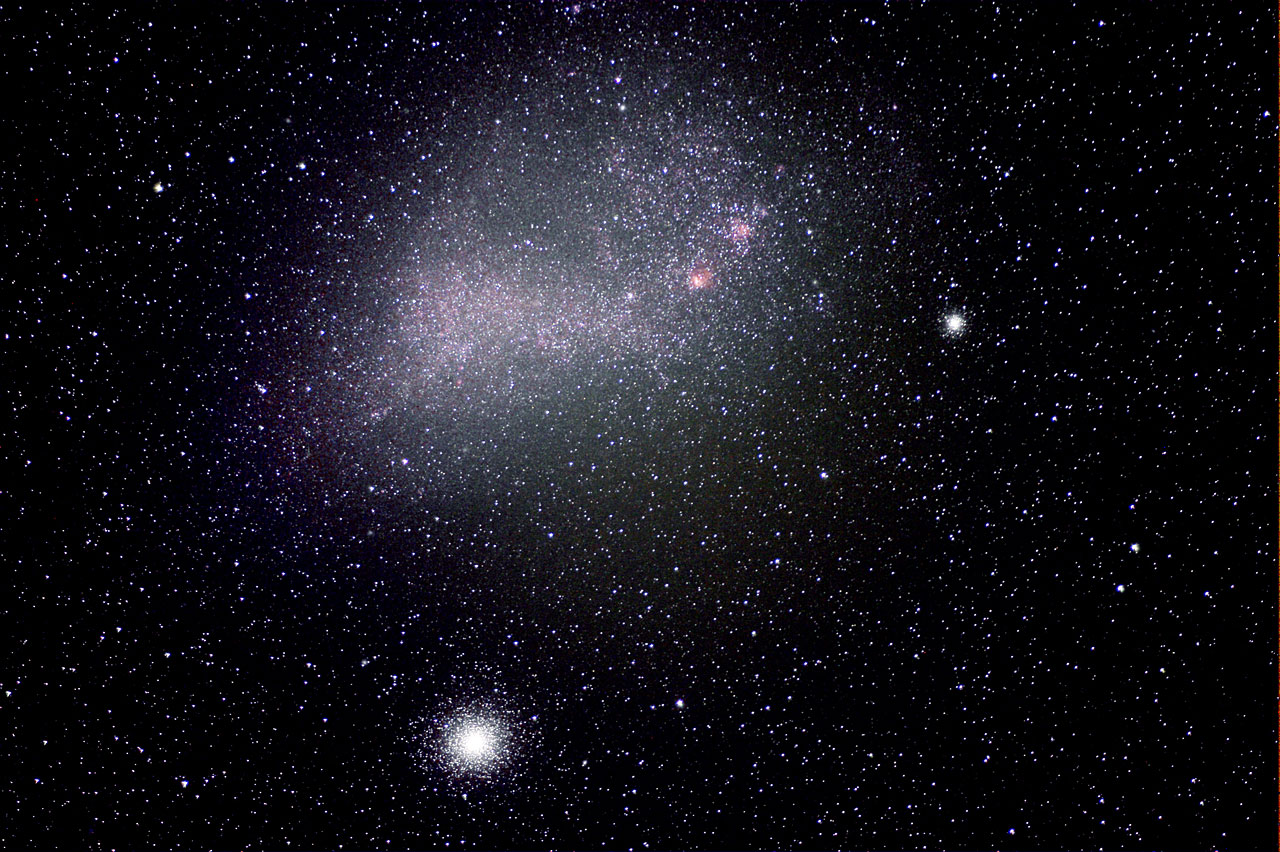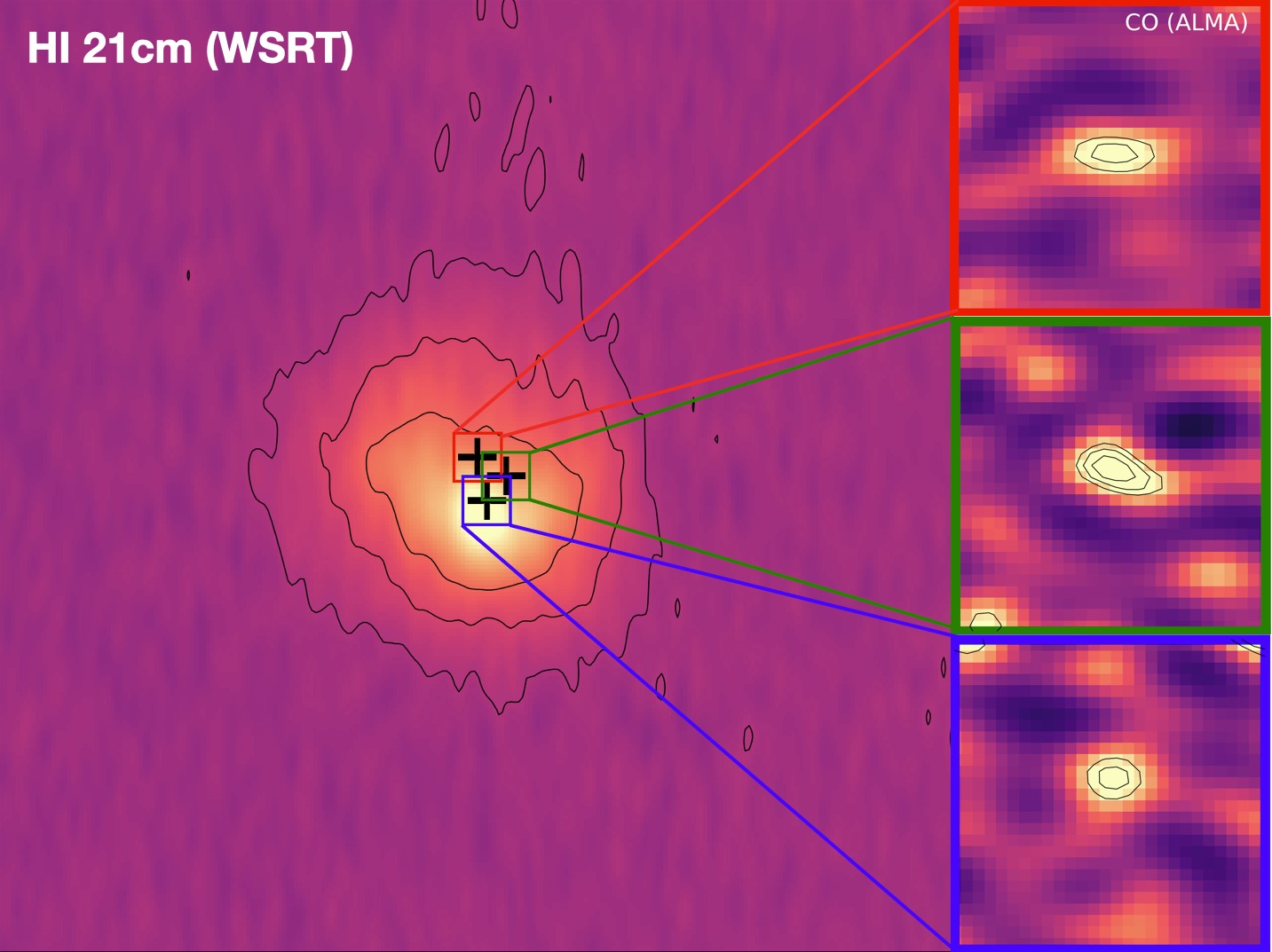
Chilean astronomers detect carbon monoxide in the smallest gas-rich dwarf galaxy discovered to date
The finding helps us understand how stars form in extreme environments with very low metallicity.
Research led by Chileans Dr. Vicente Villanueva, Researcher at the Center for Astrophysics and Related Technologies (CATA), and Dr. Matías Blaña, PhD in Astronomy from the University of Munich, has detected carbon monoxide (CO) in the dwarf galaxy Leo T, located 1 million light-years away at the edge of the Milky Way and the smallest detected so far with gas and low metallicity.
Leo T was discovered in the mid-2000s and has since been studied with various instruments, but this is the first time that molecular gas has been detected in it.
The team identified three compact molecular clouds, each with a mass close to 5,000 times that of the Sun. In total, they represent just 3% of the gas present in Leo T. The detection was made possible by the Atacama Compact Array (ACA) telescope at the ALMA observatory, whose high sensitivity allowed it to pick up signals that were previously difficult to observe.
The observation also revealed that one of the gas clouds appears to be being expelled from the galaxy, possibly due to stellar winds and interaction with the Milky Way environment. “There are some clouds that are held back by Leo T’s gravity, but there are others that are being left behind. It’s as if the wind is pushing them out of the galaxy. Our hypothesis is that stellar winds are forming these structures, but at the same time they are expelling them. It’s like driving a car with a leaf in your hand: if the car goes too fast, the leaf ends up flying away,” explains Villanueva, also a postdoctoral astronomer at the University of Concepción.
“Leo T is a very small galaxy. It has a stellar mass almost a million times smaller than that of the Milky Way. Being so small, it has less gravity, so the material needed to form stars is lost to stellar winds. Finding molecular gas clouds in a galaxy like this is truly surprising. To detect them, we had to rely on much deeper data integration, almost a hundred times more sensitive than normal. ALMA has the ability to break through these barriers, which is why this discovery is so significant,” adds Vicente Villanueva.
“Since its discovery in 2007, this galaxy dominated by dark matter has shown exotic properties, as it is so small and has so few stars compared to other dwarf galaxies located within the Milky Way. However, contrary to what was previously thought, it contains a large amount of gas (five times more than its stellar content),” explains Matías Blaña, also an astronomer at the University of La Serena.
The CHIMERA project, within which this research is framed, seeks to understand the interstellar medium in low-mass, low-metallicity galaxies. The collaboration between Vicente Villanueva and Matías Blaña was fundamental in making the detection a reality.
The researchers also highlighted the role of the international team that participated in the publication. Among them were Chilean astronomers and CATA associate researchers Rodrigo Herrera-Camus (UdeC), Gaspar Galaz (UC), Mónica Rubio (U. de Chile), and Michael Fellhauer (UdeC), who contributed their expertise to analyze the data and contextualize the findings.
The role of carbon monoxide in star formation
Carbon monoxide (CO) is an indirect tracer of molecular hydrogen (H₂), the raw material for star formation. Detecting it in such a small galaxy with so few metals is a major challenge, as CO is usually scarce in these environments.
“Today we know that star formation occurs mainly from molecular gas, but molecular hydrogen is difficult to observe. That’s why we use tracers such as CO. The problem is that in dwarf galaxies such as Leo T, the amount of CO is so small that, in order to find it, we have to go to the limit of the sensitivity of the instruments,” says Villanueva.
The research also determined that Leo T has extremely high CO-H₂ conversion factors, confirming that much of the molecular hydrogen is “hidden” and cannot be easily observed through CO. This provides key clues about how small galaxies form stars under conditions similar to those in the early universe.
“These galaxies are like living fossils that tell us how the first stars in the universe were formed. Understanding them is like looking back in time and seeing how the first cosmic lights were lit,” says Villanueva.
Next steps
The team plans to conduct new observations with ALMA, which has higher resolution, to accurately determine the internal structure of the detected clouds. Blaña adds that at first, “it was a big surprise to find molecular gas in this galaxy. Several studies indicated that it had stopped forming stars several million years ago and speculated that Leo T was entering its ‘retirement’ stage. The history of this galaxy is still unknown: whether it collided with the Milky Way in the past, or whether it is entering for the first time, which adds to its mysteries.”
“Our observations tell us that there are two factors that explain the formation of these structures: atomic gas, which had already been identified, and the action of stellar winds that compress the gas and convert it into molecular gas. Now we want to go deeper to understand how this process evolves and whether Leo T still has the capacity to form new stars,” says Villanueva.
Finally, both astronomers conclude that they are already leading new proposals for the CHIMERA project, led by both of them and involving collaborators from Chile, Europe, and the United States, which focuses on studying star formation and dynamics in low-mass galaxies using both observations and simulations.
“In particular, we have already applied for more time at ALMA to see the clouds in greater detail and observe their structures, and we have been granted time at APEX to observe molecular gas at different temperatures. In addition, we applied to the renowned VLA (Very Large Array) radio telescope to see if, with the morphology of the atomic gas in Leo T, we can determine its orbital history and origin through new simulations, and determine how this monoatomic gas is connected to the molecular gas,” concludes Matías Blaña.
Recent news
-
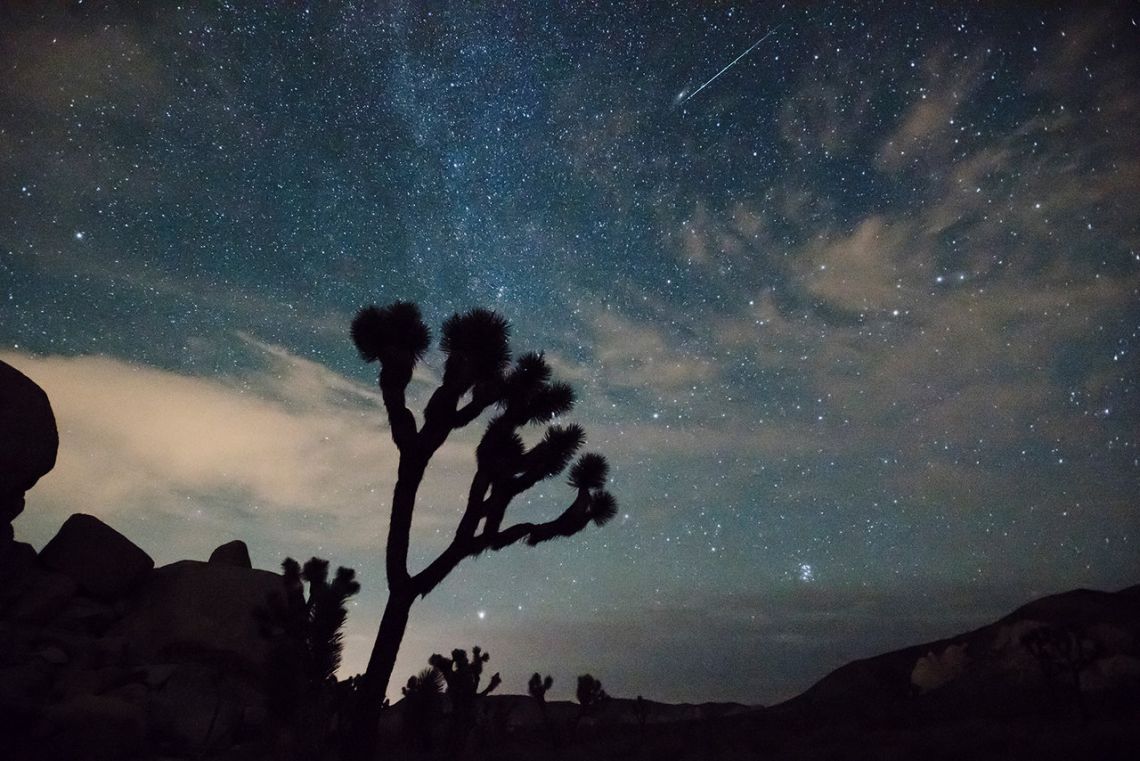 Publicado el: 15/11/2025Leonids meteor shower 2025: What are they, when will they be visible from Chile, and what can we learn from them?
Publicado el: 15/11/2025Leonids meteor shower 2025: What are they, when will they be visible from Chile, and what can we learn from them? -
 Publicado el: 13/11/2025CATA researcher strengthens international ties during visit to the Center for Astrobiology in Madrid
Publicado el: 13/11/2025CATA researcher strengthens international ties during visit to the Center for Astrobiology in Madrid -
 Publicado el: 12/11/2025Fourth graders learned what would happen if the Moon did not exist
Publicado el: 12/11/2025Fourth graders learned what would happen if the Moon did not exist -
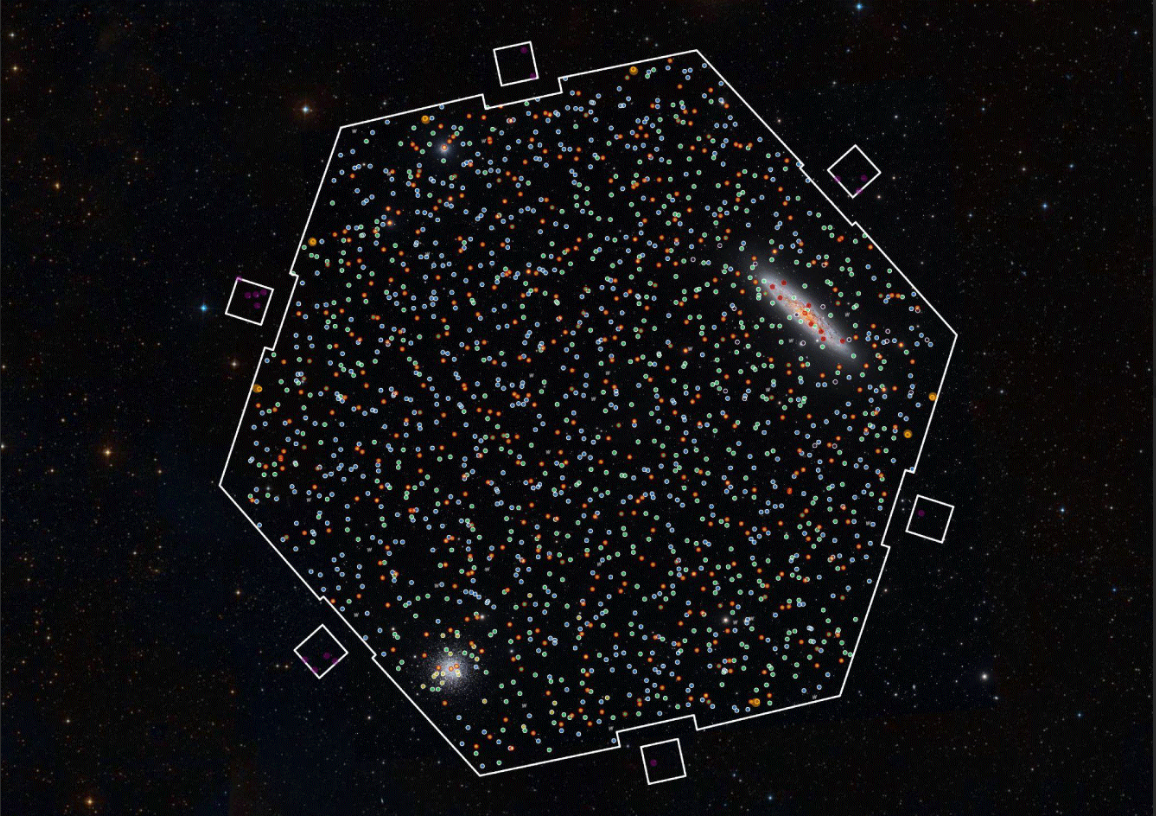 Publicado el: 29/10/2025Chile celebrates the first light of 4MOST: two major projects involving CATA astronomers begin to explore the Universe
Publicado el: 29/10/2025Chile celebrates the first light of 4MOST: two major projects involving CATA astronomers begin to explore the Universe -
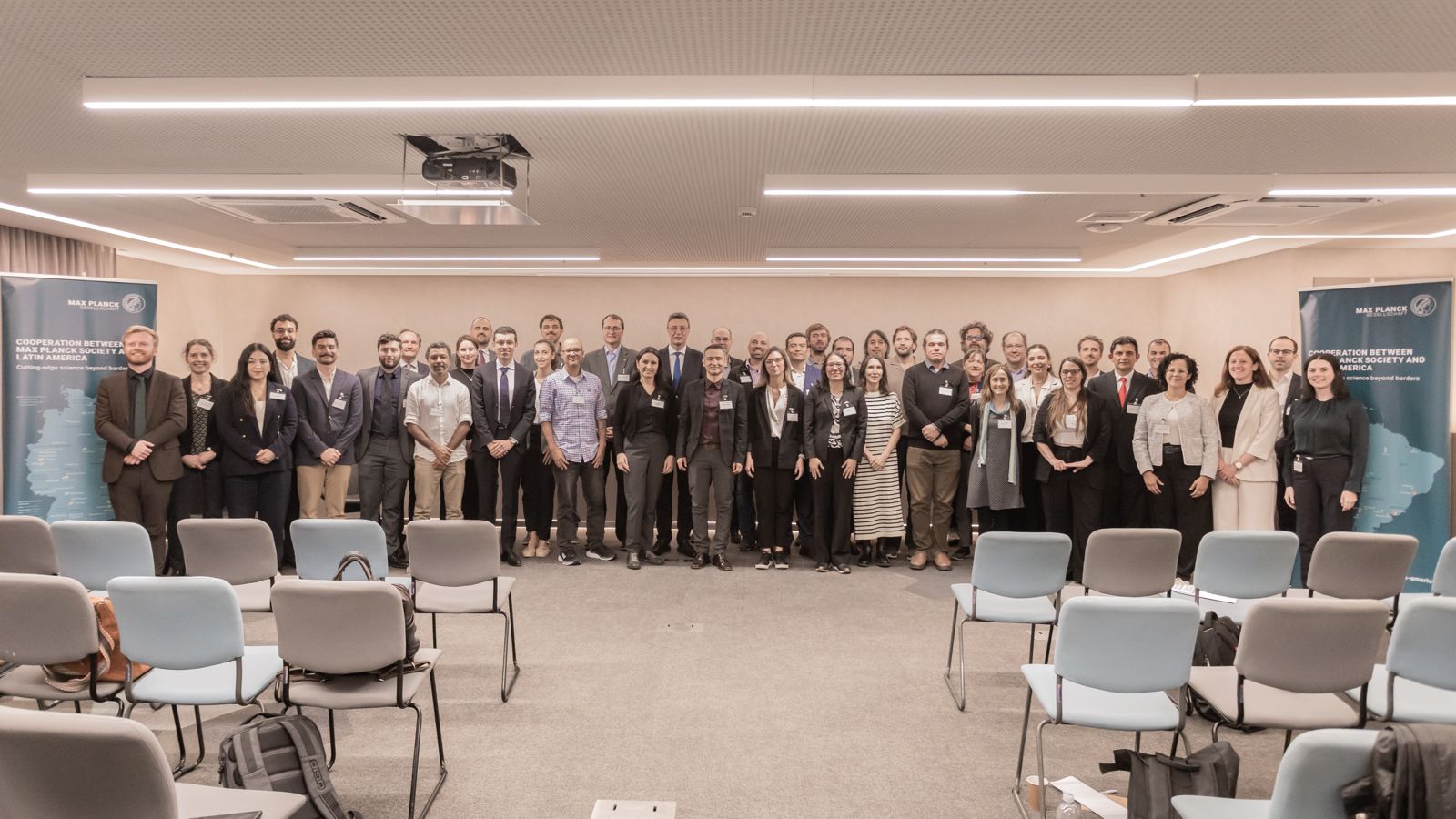 Publicado el: 24/10/2025CATA researcher participated in Max Planck regional meeting in Brazil
Publicado el: 24/10/2025CATA researcher participated in Max Planck regional meeting in Brazil
Categories list
- Acknowledgments 21
- Astrobiology 6
- AstroCluster 1
- Black holes 18
- Corporativo 57
- Cosmology 5
- Descubrimientos 22
- Disclosure 71
- Exoplanets 13
- Extension 4
- Galaxies 21
- Galaxies formation 5
- Inter y Transdisciplina 4
- Local Universe 16
- Publications 6
- Sin categorizar 34
- Solar System 21
- Stellar formation 8
- Technology 14
- Technology Transfer 16
